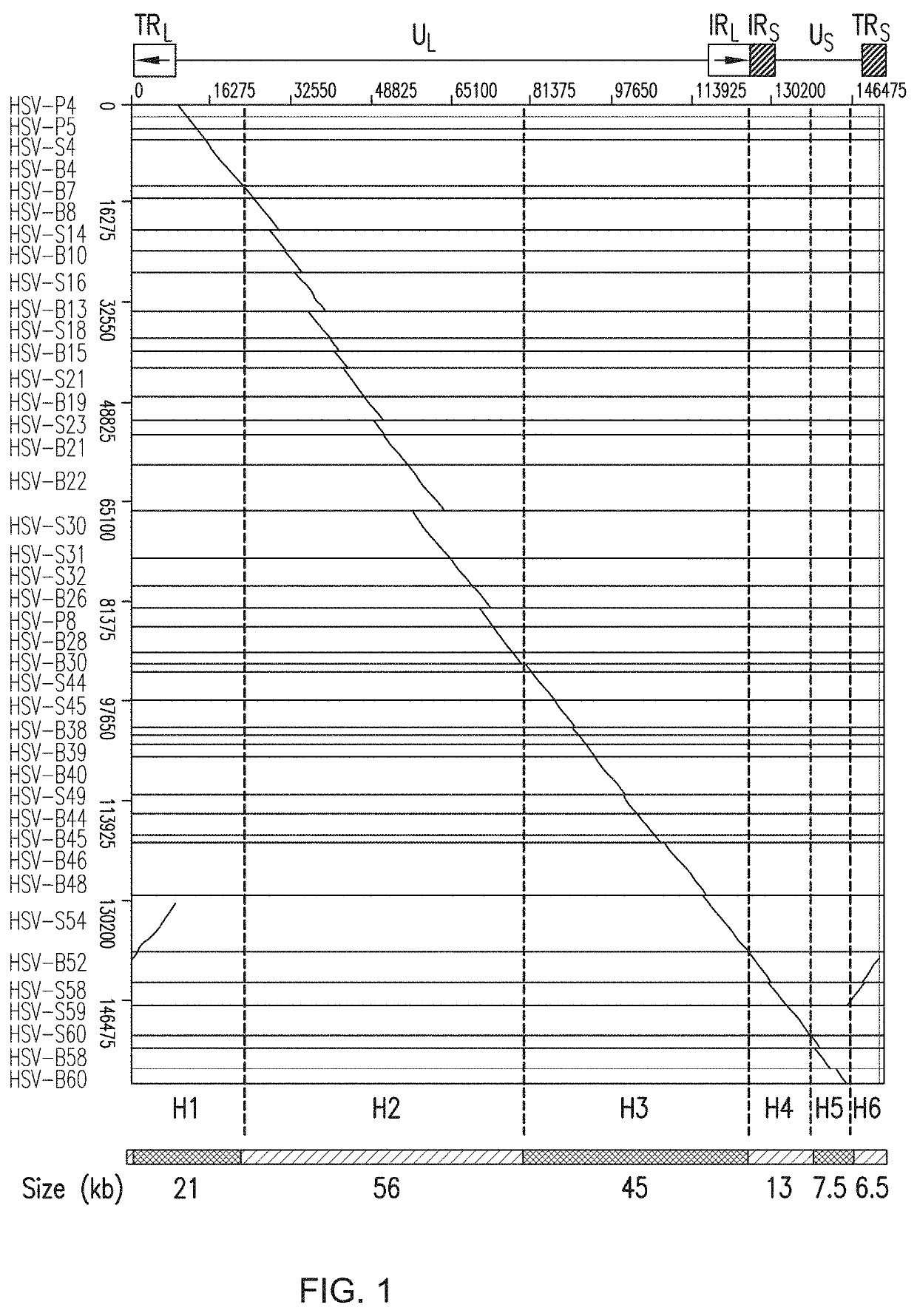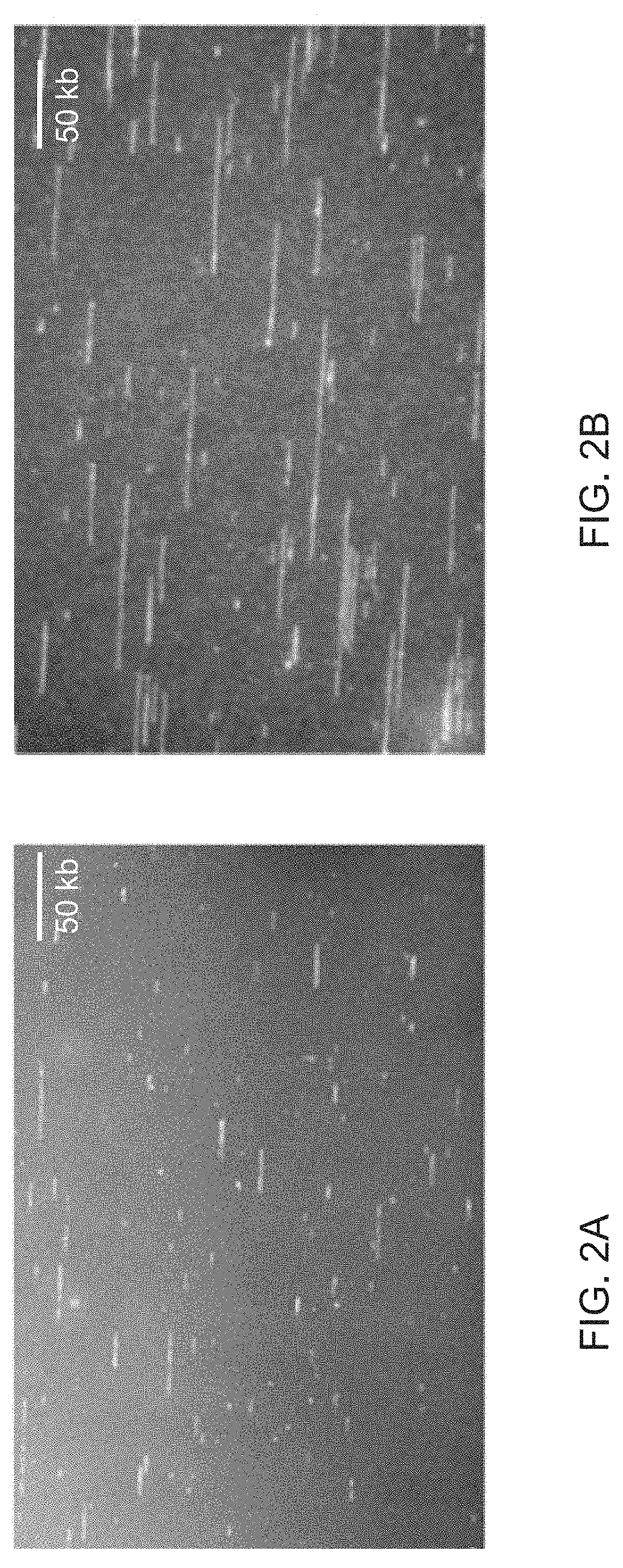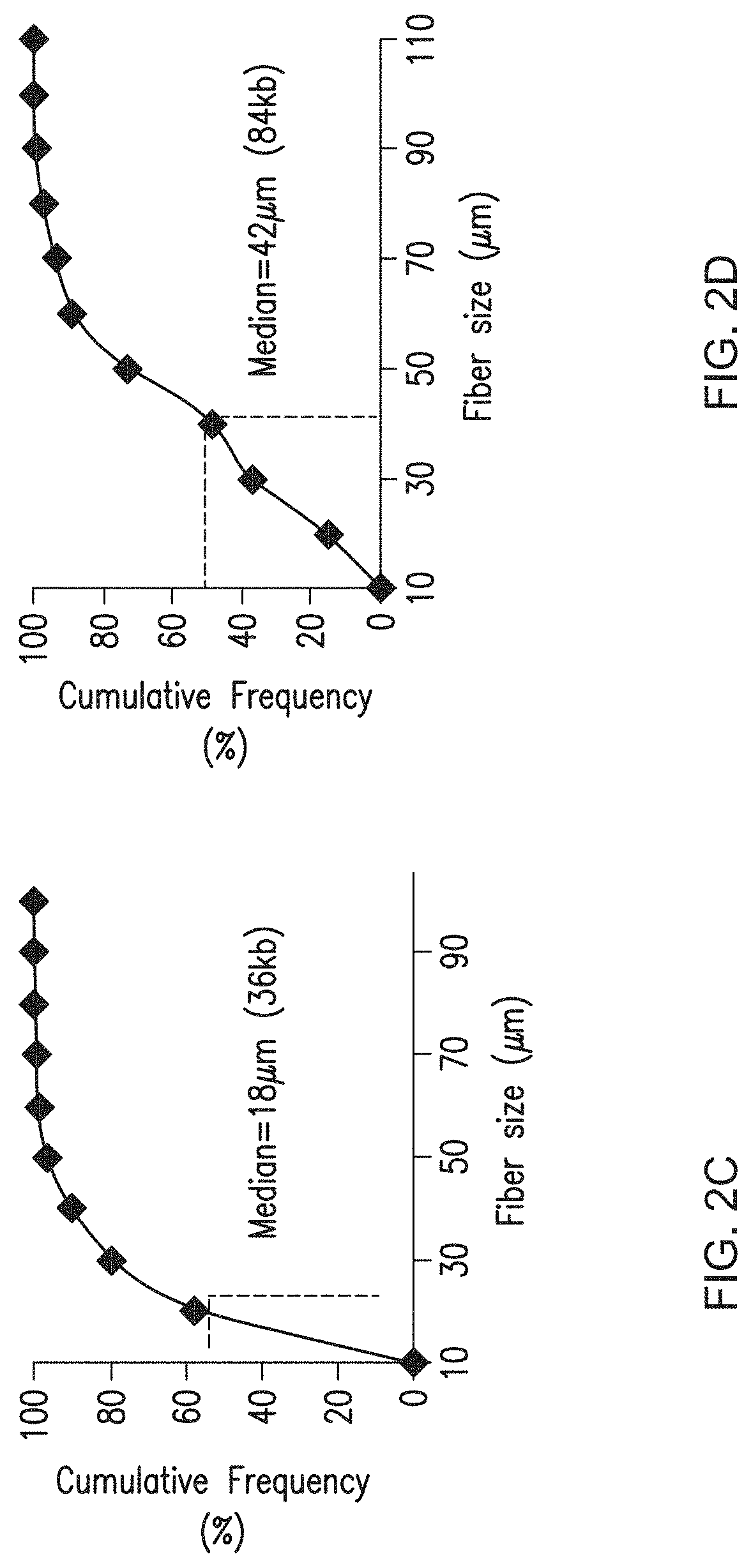Diagnosis of viral infections by detection of genomic and infectious viral DNA by molecular combing
a technology diagnostics, which is applied in the field of diagnostics of viral infections by detection of genomic and infectious viral dna by molecular combing, can solve the problems of virus useless or uncompetitive, technology can be used, and errors in the genome, etc., and achieves the effects of reliable, simple, fast and inexpensiv
- Summary
- Abstract
- Description
- Claims
- Application Information
AI Technical Summary
Benefits of technology
Problems solved by technology
Method used
Image
Examples
example 1
Herpes Simplex Virus Detection
[0113]Preparation of Embedded DNA Plugs from Viral Particles
[0114]HSV-1 DNA was extracted from viral particles by standard phenol:chloroform extraction (Ben-Zeev, Weinberg et al. 1974) or by a modified procedure described in Lebofsky et al. (Lebofsky, Heilig et al. 2006) which are both incorporated by reference. Briefly, HSV-1 particles were resuspended in 1×PBS at a concentration of 5·106 viral particles / mL, and mixed thoroughly at a 1:1 ratio with a 1.2% w / v solution of low-melting point agarose (Nusieve GTG, ref 50081, Cambrex) prepared in PBS, at 50° C. 90 μL of the viral particles / agarose mix was poured in a plug-forming well (BioRad, ref 170-3713) and left to cool at least 30 min at 4° C. Embedded viral particles were lysed in 0.1% SDS-0.5M EDTA (pH 8.0) solution at 50° C. for 30 minutes. After three washing steps in 0.5M EDTA (pH 8.0) buffer of 10 minutes at room temperature, plugs were digested by overnight incubation at 50° C. with 2 mg / mL Prot...
example 2
Human Immunodeficiency Virus Detection
[0169]Preparation of Embedded DNA Plugs from ACH-2 Cells Culture
[0170]ACH-2 cell lines (Clouse, Powell et al. 1989) were cultivated according to the authors' instructions. DNA was extracted as described in (Schurra and Bensimon 2009). Briefly, cells were resuspended in 1×PBS at a concentration of 107 cells / mL mixed thoroughly at a 1:1 ratio with a 1.2% w / v solution of low-melting point agarose (Nusieve GTG, ref 50081, Cambrex) prepared in 1×PBS at 50° C. 90 μL of the cell / agarose mix was poured in a plug-forming well (BioRad, ref 170-3713) and left to cool down at least 30 min at 4° C. Agarose plugs were incubated overnight at 50° C. in 250 μL of a 0.5M EDTA (pH 8), 1% Sarkosyl, 250 μg / mL proteinase K (Eurobio, code: GEXPRK01, France) solution, then washed twice in a Tris 10 mM, EDTA 1 mM solution for 30 in at room temperature.
[0171]Final Extraction of DNA and Molecular Combing
[0172]Plugs of embedded DNA from ACH-2 cells were treated for combing...
example 3
Detecting an Oncogene by Molecular Combing
[0195]In a manner to analogous to the detection of HSV genomic DNA in Example 1, probes are designed to detect the presence of a viral oncogene. Probes are designed to complement 80-100% of the active viral oncogene of interest and Molecular Combing is performed. The results indicate the presence of an active oncogene in a subject, leading to diagnosis and therapeutic intervention.
PUM
 Login to View More
Login to View More Abstract
Description
Claims
Application Information
 Login to View More
Login to View More - R&D
- Intellectual Property
- Life Sciences
- Materials
- Tech Scout
- Unparalleled Data Quality
- Higher Quality Content
- 60% Fewer Hallucinations
Browse by: Latest US Patents, China's latest patents, Technical Efficacy Thesaurus, Application Domain, Technology Topic, Popular Technical Reports.
© 2025 PatSnap. All rights reserved.Legal|Privacy policy|Modern Slavery Act Transparency Statement|Sitemap|About US| Contact US: help@patsnap.com



